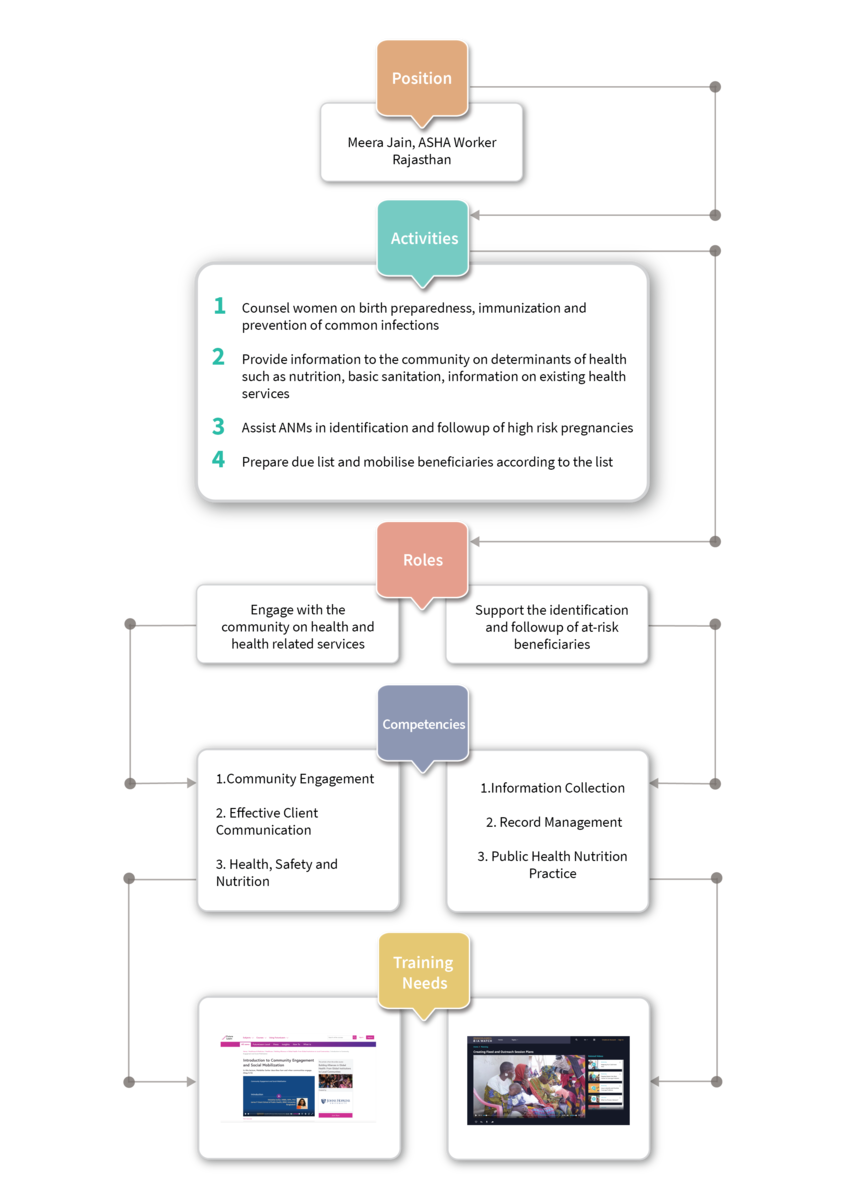Capacity building efforts to empower frontline workers
To ensure efficient delivery of public services, it is crucial that public officials understand exactly what is expected of them in their positions, and the attitudes, skills, and knowledge (read competencies) they would need to deliver effectively in their positions. And to understand the roles in a given position, it’s important to list down the activities officials undertake on a day-to-day basis. This would then help in identifying the competencies required for the roles.
This process, of understanding the roles, activities, and competencies in a job, lies at the core of Mission Karmayogi, a civil services capacity building programme initiated by the Government in 2020. A crucial aspect of the programme is access competency-building products (CBPs) – which can be mapped to bridge any identified competency gaps. A rich repository of high-quality CBPs from best-in-class content providers will be hosted on the Integrated Government Online Training Karmayogi (iGOT KY) platform, enabling targeted and personalised learning for all.
In the first part of this series, we had mentioned how this process will specifically aid the execution capacity of frontline workers, and enhance local governance in the long-term. Let’s understand this with an example.
On the ground
Meera Jain, 28, has recently been selected as an ASHA Worker in Inana village, Nagaur district, Rajasthan. Meera has many roles to perform in this position, which involve a range of activities that in turn, require many competencies. Anju Inaniya, ASHA Facilitator, has been entrusted with the role of supervising and empowering Meera (and 35 other ASHA Workers) to perform their responsibilities in a timely manner. Once all these ASHA workers have developed a core understanding of their roles, activities and competencies, this will help them -
- Build role clarity by laying out the different activities undertaken at the individual, community and institutional level
- Map behavioural, domain, and functional competencies required for each role
- Use competencies to identify a set of relevant CBP providers
Here’s a visual representation of what this will look like.

Once the relevant competencies have been identified for Meera’s role, Anju can aggregate competency gaps to plan a series of capacity building sessions at the sectoral level in consultation with the block and district leadership. She can assist the block/ district Programme Manager - National Health Mission to prioritise the list of courses/trainings mapped to required competencies. This will ensure that the capacity building process is not limited to single-point training interventions, but has a more structured multi-year approach.
In the case of community health workers like ASHAs, they would get access to training resources that are not solely programmatic driven, and which can help build a wide range of competencies – including skills like multi-stakeholder communication and coordination. For example, Meera would require proficiency in functional competencies such as community engagement. The induction training manual for newly selected ASHA workers, prepared by the Ministry of Health and Family Welfare, details out effective practices to exercise participatory leadership. To complement this, iGOT Karmayogi would indicate relevant, engaging courses such as Social Accountability and Civic Engagement, Working with Panchayats, among others.
This competency-driven capacity building approach will facilitate not just the curation of high-quality, regionally contextualised, and multi-modal content, but also tech-enabled delivery and ease of access. With a focus on building behavioural and functional competencies, the performance and productivity of frontline workers will be enhanced. This approach to capacity building is exemplified by Noora Health’s Care Companion Program upskilling nurses and counsellors on health promotion skills.
A competency-driven capacity building approach can empower frontline workers by enhancing both, the discovery of, and access to the right content from a range of content providers. This will further enable them to build a diverse set of competencies in addition to focussed domain competencies.
This is the second post of a two-part series on the importance of capacity building for frontline workers.

.jpg)


Add new comment